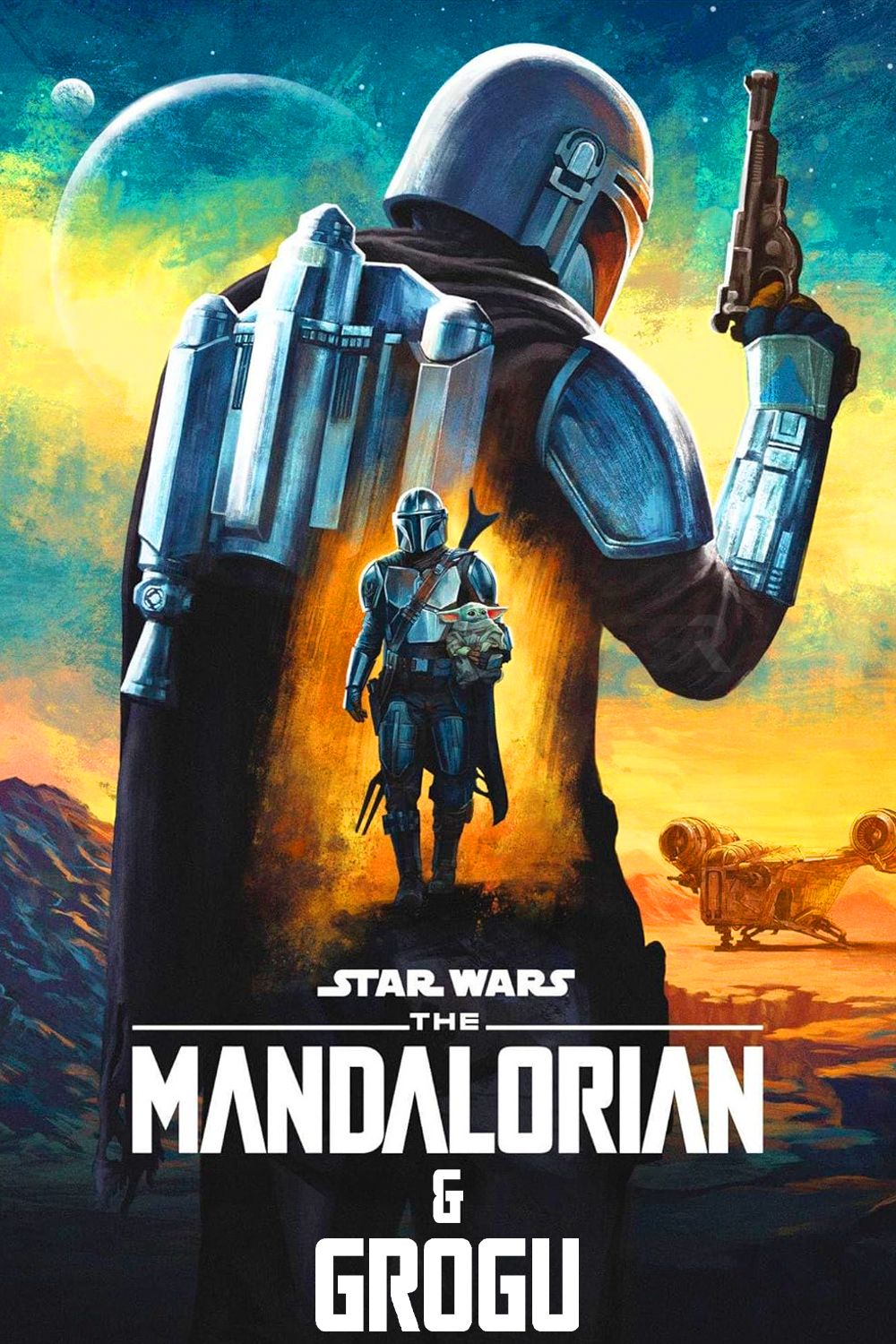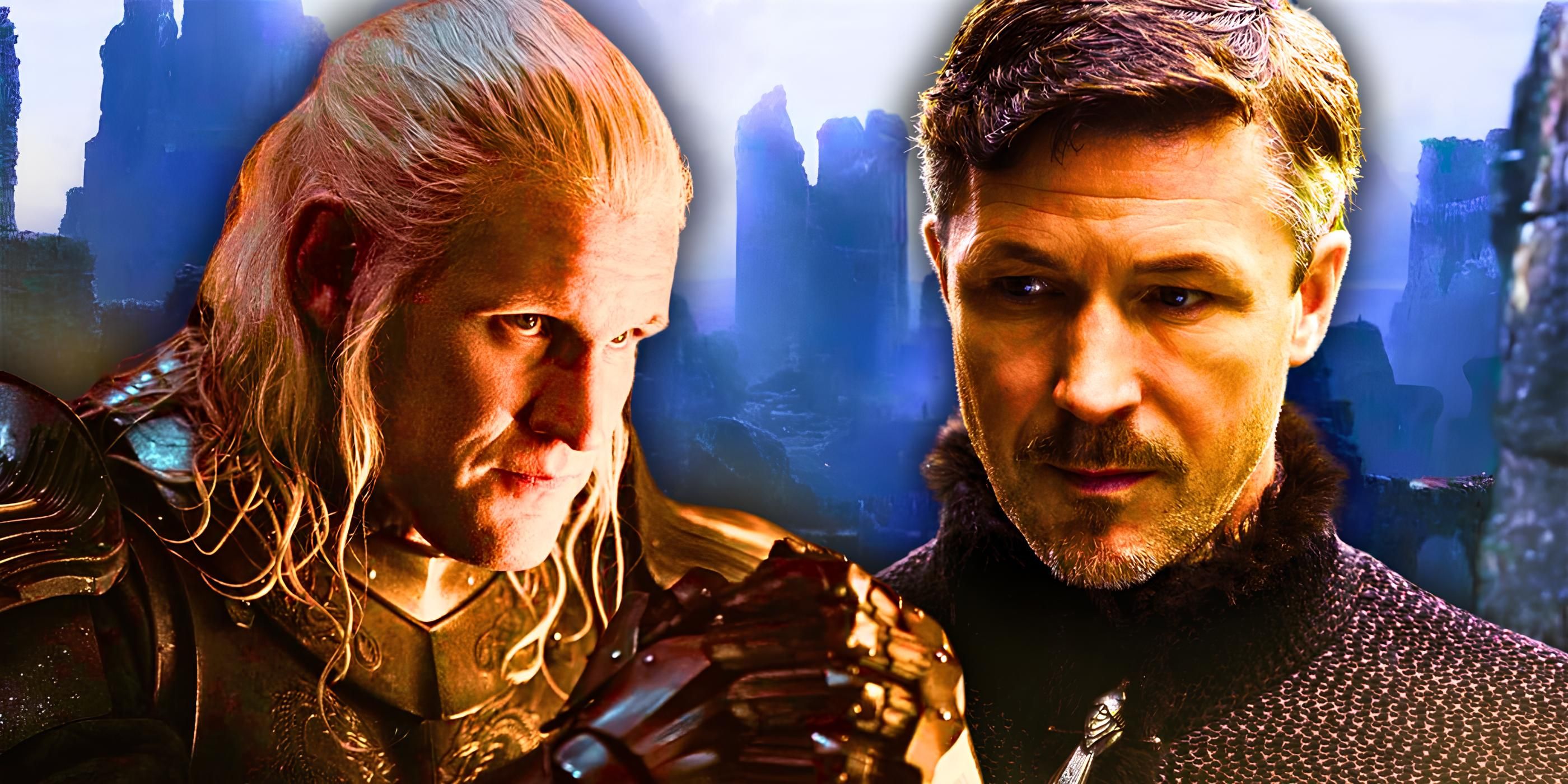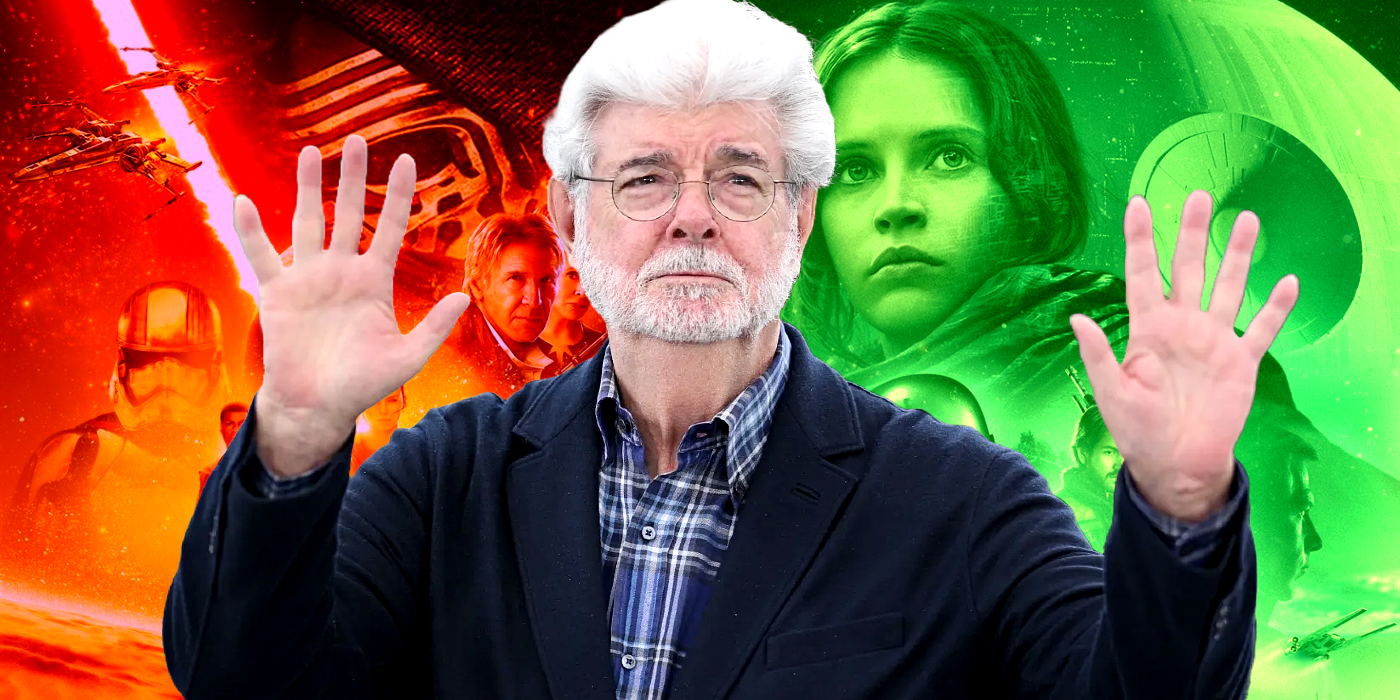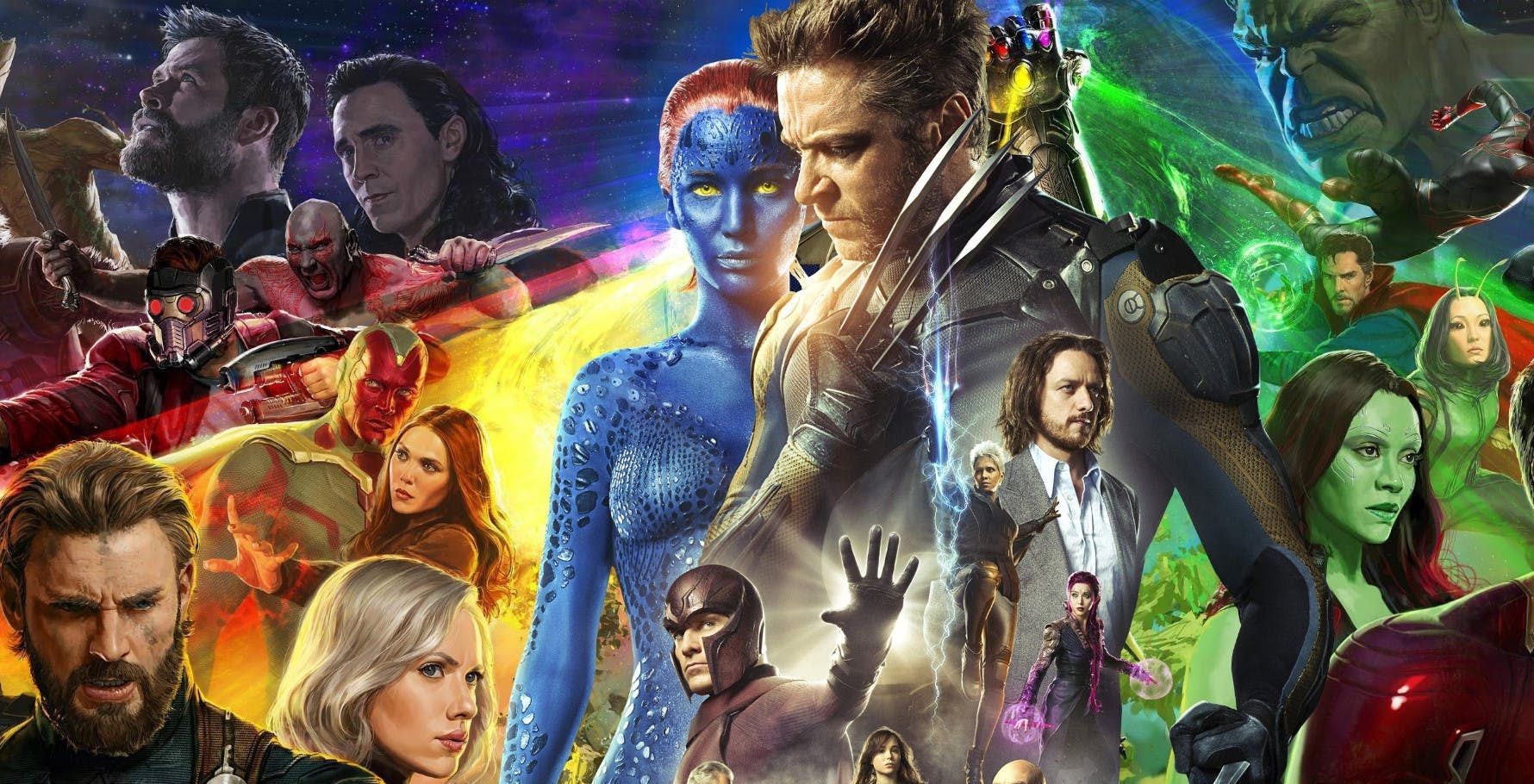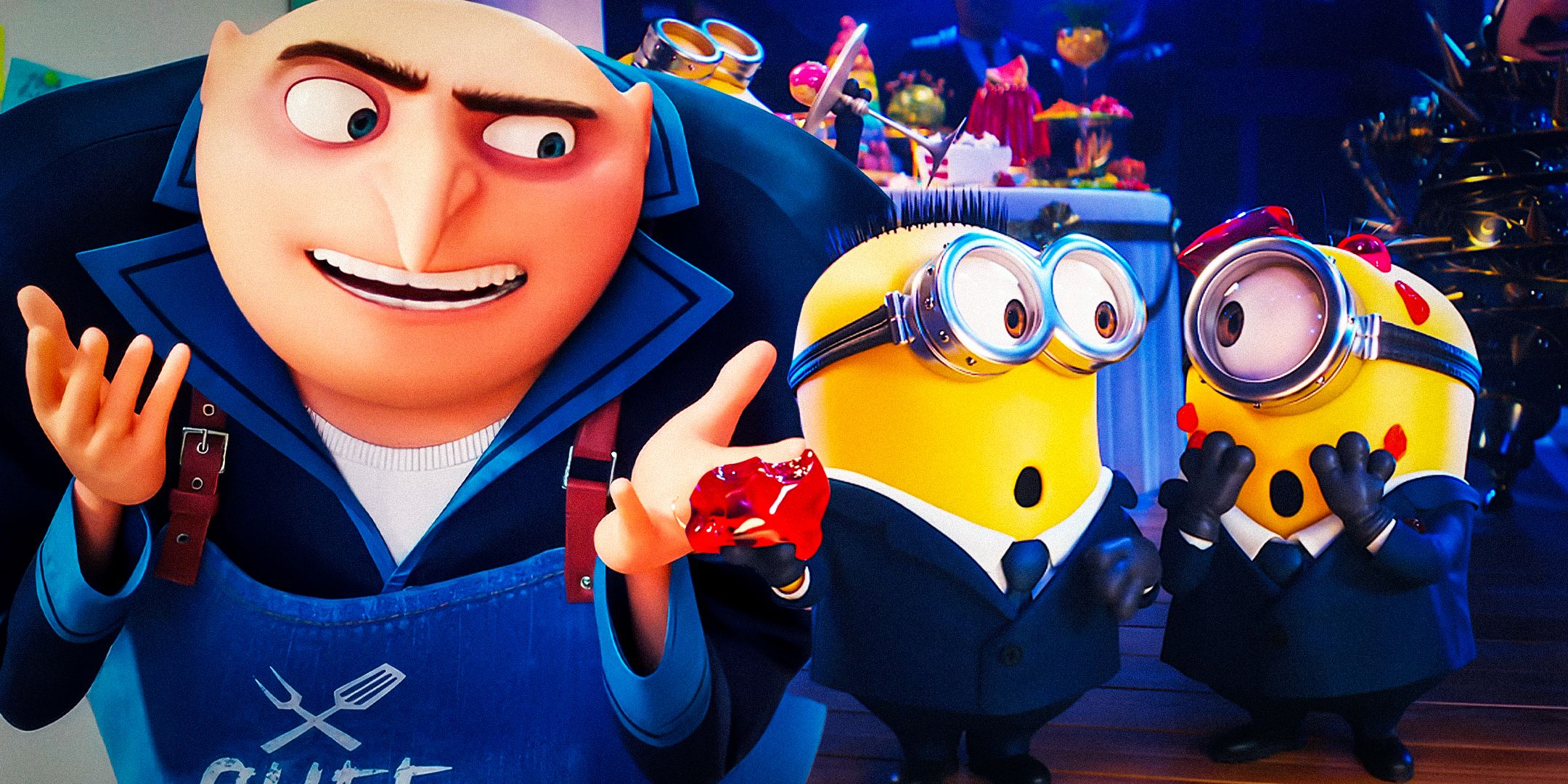Captain America is one of Marvel’s oldest and best superheroes. From his debut punching Hitler in the face in 1941 Captain America Comics #1, Marvel’s patriotic hero has made his impact on the comic book world thanks to the tireless efforts of hundreds of writers and artists over the decades.
With over eighty years of comics to draw from, stretching all the way back to when Joe Simon and Jack Kirby first introduced him to the world, Cap is certainly not hurting for great stories. The sheer amount of comics starring Captain America can be intimidating to readers looking to read some of the Star-Spangled Avenger’s best adventures. Given that pedigree, ranking the ten best Captain America stories in Marvel Comics history is no easy feat, but the following list of storylines should be an excellent starting place for Cap fans wanting to read some great comics.
10
“The Captain” (aka “Captain America No More”)
Captain America (Vol. 1) #332-350 by Mark Gruenwald, Kieron Dwyer & Tom Morgan
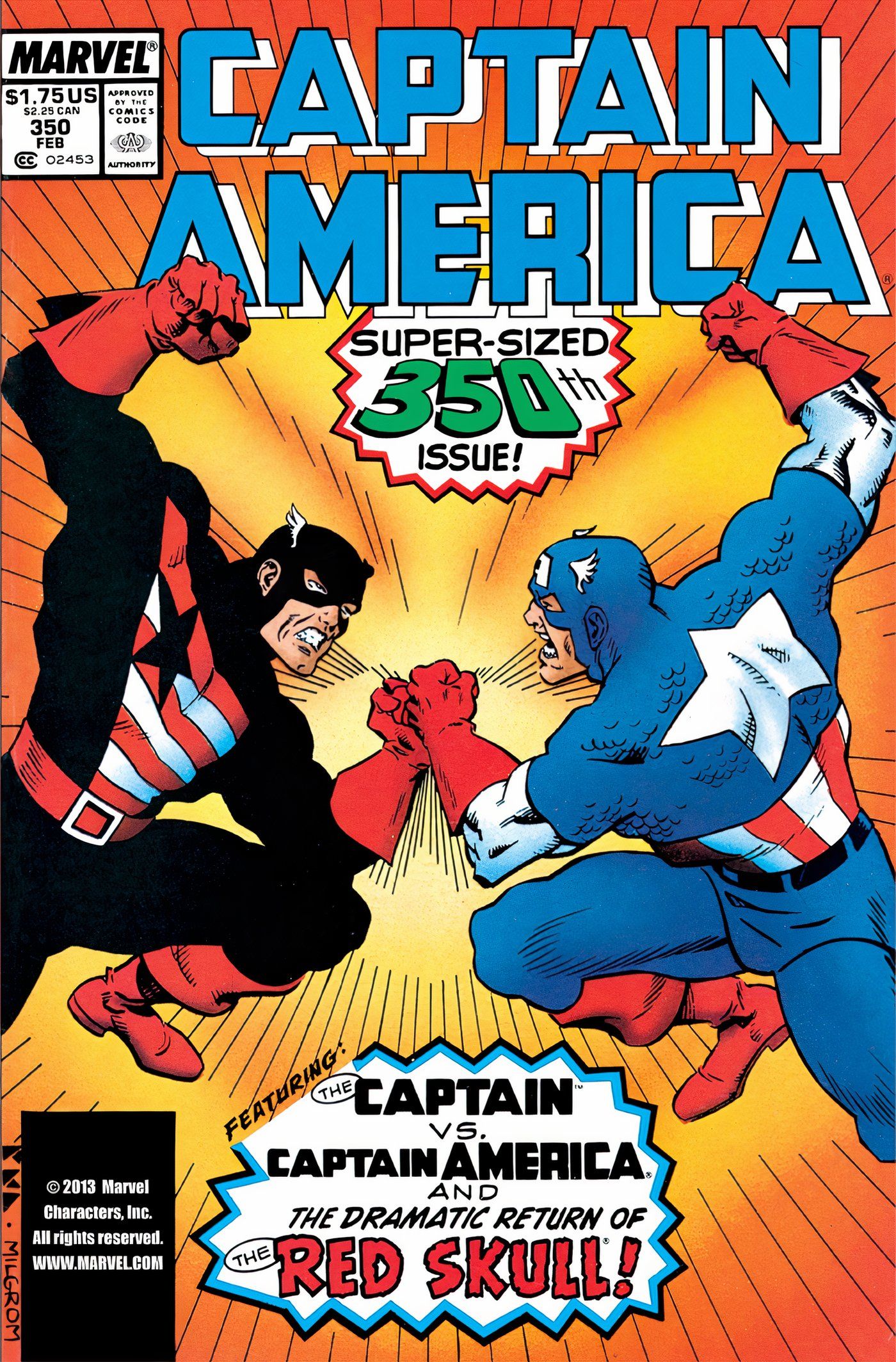
Steve Rogers has given up the stars and stripes on more than one occasion, but “The Captain” might just be the best storyline of them all. Written by long-time Captain America writer Mark Gruenwald, the story sees Cap being forced to work on behalf of the U.S. government due to a legal loophole. Uneasy with the prospect of being beholden to policies he may not agree with, Rogers chooses to step down as Captain America. Vigilante John Walker is chosen as his replacement, and Rogers hits the road, eventually donning a red, white and black version of his costume and dubbing himself “The Captain.”
As Walker becomes increasingly violent and unhinged, Rogers heads to Washington to clean up the mess, only to discover the whole thing has been a ploy by none other than the Red Skull. This eighteen-issue storyline is the pièce de résistance of Gruenwald’s ten-year run on the title, a classic superhero story that deftly balances soap opera melodrama with costumed fisticuffs. The story also acts as a showcase for Gruenwald’s vision of Steve Rogers as an independent spirit. Just because he wears the stars and stripes doesn’t mean that Rogers is willing to blindly follow orders, which is perfectly contrasted against the likes of John Walker.
9
“Castaway in Dimension Z”
Captain America (Vol. 7) #1-10 by Rick Remender & John Romita, Jr.
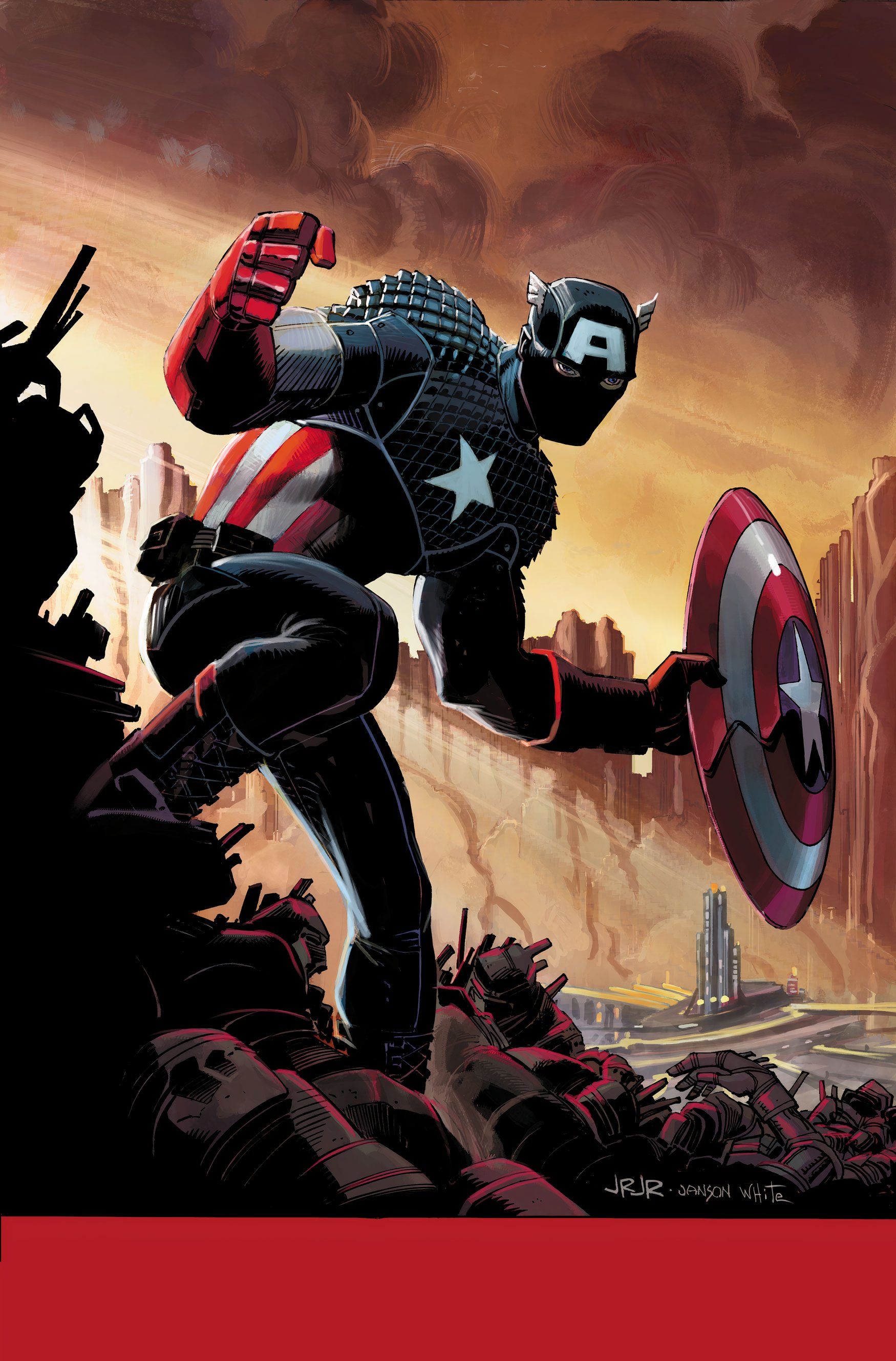
Rick Remender was given the nigh impossible task of following writer Ed Brubaker’s monumental eight-year run on the character when he took the reins of Captain America in 2012. Yet “Castaway in Dimension Z” proved that the new creative team had their own unique vision, as Cap finds himself stranded in an alternate dimension where Arnim Zola reigns supreme. Throughout the course of the story, Cap winds up adopting Zola’s son Ian in a post-apocalyptic wasteland as he struggles to survive in a strange world.
Marked by Kiby-esque monsters, sci-fi action and the perils of fatherhood, this ten-issue story-line is elevated pulp at its finest. Taking the character 180 degrees away from the espionage-flavored stories of the previous run was a stroke of genius on the creative team’s part, as Remender and Romita, Jr. make this volume of Captain America their own. What didn’t change was the creative team’s devotion to Cap himself, as “Castaway in Dimension Z” digs deep into Steve’s early days to present a compelling portrait of his new role as a father.
8
“Death of the Red Skull”
Captain America (Vol.1) #292-300 by J.M. DeMatteis, Paul Neary & Michael Ellis
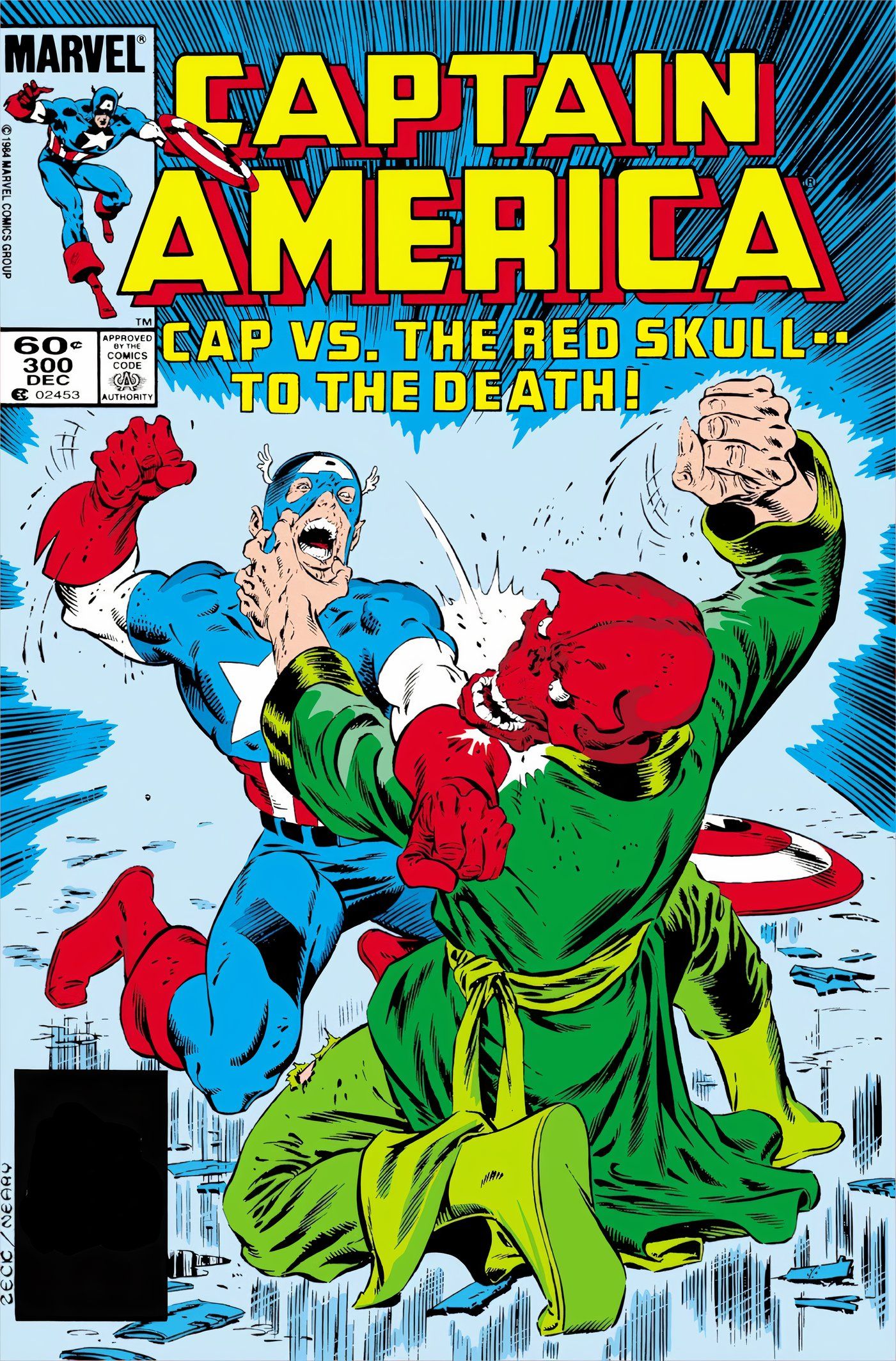
J.M. DeMatteis’ run was marked by a desire to better define Steve Rogers as a character separate from his superhero life, and this climactic storyline brings all of those elements to the fore. The story sees an aging Red Skull plotting his final revenge against Captain America, kidnapping his friends and allies in a ploy to steal Cap’s youth and age his body to its actual age. Characters like the Red Skull’s daughter Sin first appeared during this storyline, filling out Cap’s rogues gallery with a greater variety of super-villains.
DeMatteis’ psychological approach adds so much to what could otherwise be seen as a silly story about grown adults in tights, and the relationship deptcted between Cap and the Red Skull is a fascinating portrait of their bitter rivalry. Sadly, editorial differences saw DeMatteis leave the book before he could end it the way he wanted, and Captain America #300 wraps up the storyline in a fairly rushed manner. Still, the storyline chronicles one of the best encounters between Captain America and the Red Skull, his ultimate arch-nemesis.
7
“Cap for President!”
Captain America (Vol. 1) #250 by Roger Stern & John Byrne
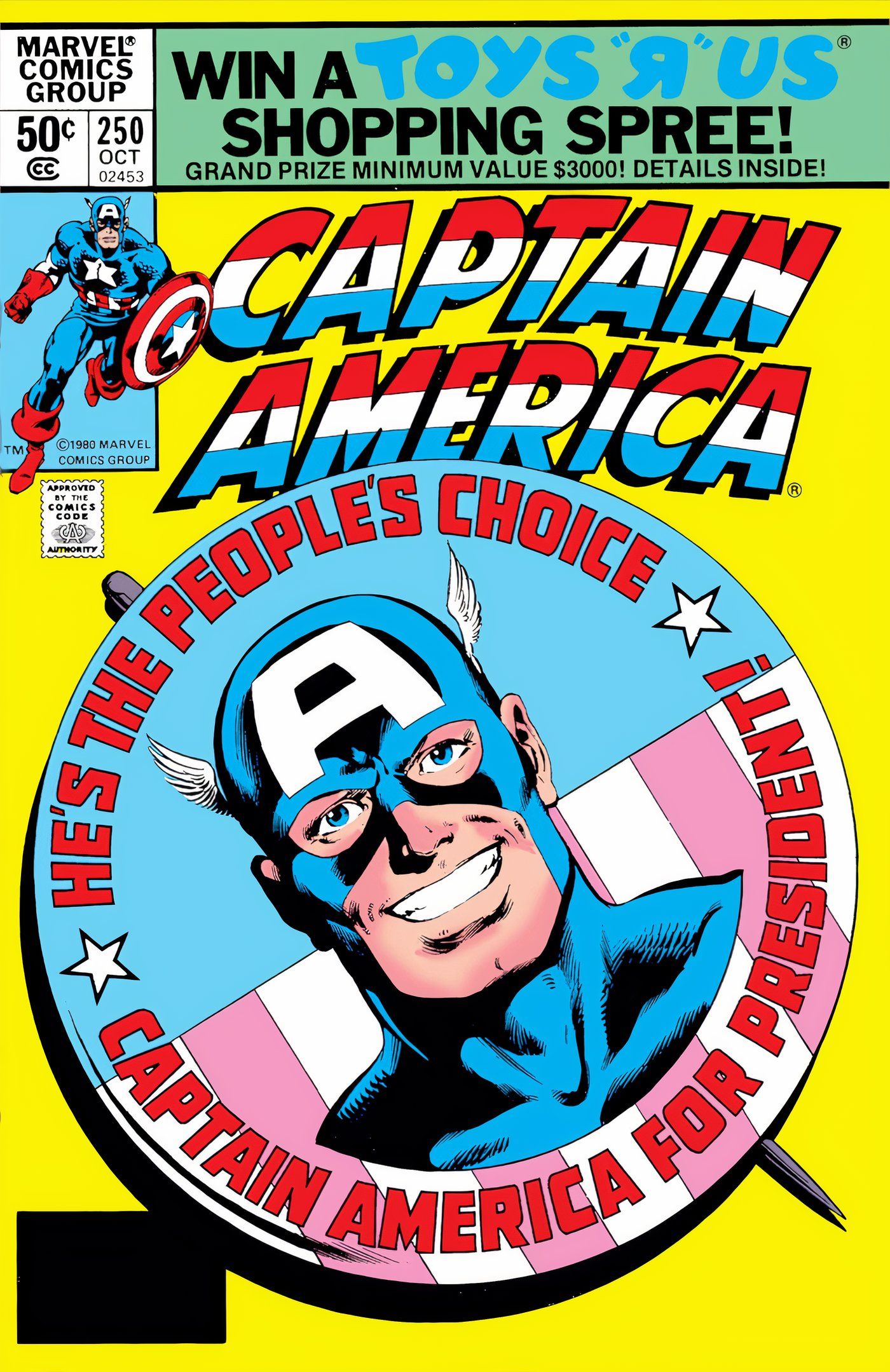
This single-issue story from Roger Stern and John Byrne shows that, while Captain America may be an effective leader on the battlefield, that doesn’t necessarily translate into leading an entire nation. The story sees Cap being approached for a presidential bid by the fictional New Populist Party after foiling a terrorist plot. Cap considers the idea for a time, but ultimately rejects the campaign, feeling that he shouldn’t be the person making policy decisions for an entire country.
It’s a relatively straight-forward issue, and the story’s true strength comes from its clearly-defined image of the central character. While someone named “Captain America” seems like an ideal candidate for U.S. President, Cap immediately sees the inherent problem with the idea, as the hero represents the dream of what his country could be as a symbol. “You need to look within yourselves to find the people you need to keep this nation strong,” Cap states in the issue’s climactic speech before a gathered crowd, recognizing that he could never live up the ideal American Dream while he himself is still chasing it.
6
Captain America: White
Captain America: White #1-5 by Jeph Loeb & Tim Sale
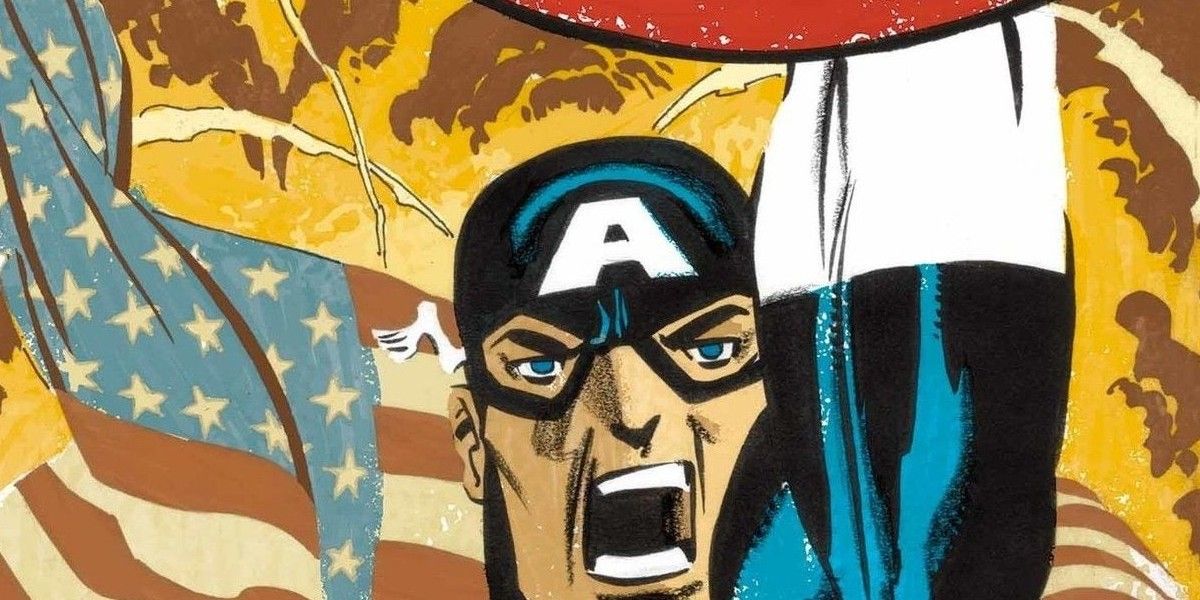
The last installment of Jeph Loeb and Tim Sale Marvel “Colors” series, what’s most intriguing about Captain America: White is Cap’s struggle to come to grips with his simplistic morality as it applies to wartime. The story sees Captain America and Bucky officially entering the war as they ship off to Nazi-occupied Paris in WWII, whereupon Cap has his morals tested as he meets up with a group of French resistance fighters who don’t play by the “rules.” When Cap’s adversary the Red Skull is revealed to be in Paris as well, Cap faces one of his greatest challenges during the entire war.
The story is packed with the earnest nostalgia and deft characterization that marked all of Loeb and Sale’s collaborations, as the writer and artist always seemed to bring the best out of each other. Like the previous Marvel “Color” series, Captain America: White is a story about loss and grief. The real beating heart of the series is the relationship between Captain America and Bucky, aching with the tragedy that we all know awaits Cap’s sidekick in the coming years.
5
“Operation: Rebirth”
Captain America (Vol. 1) #444-448 by Mark Waid & Ron Garney
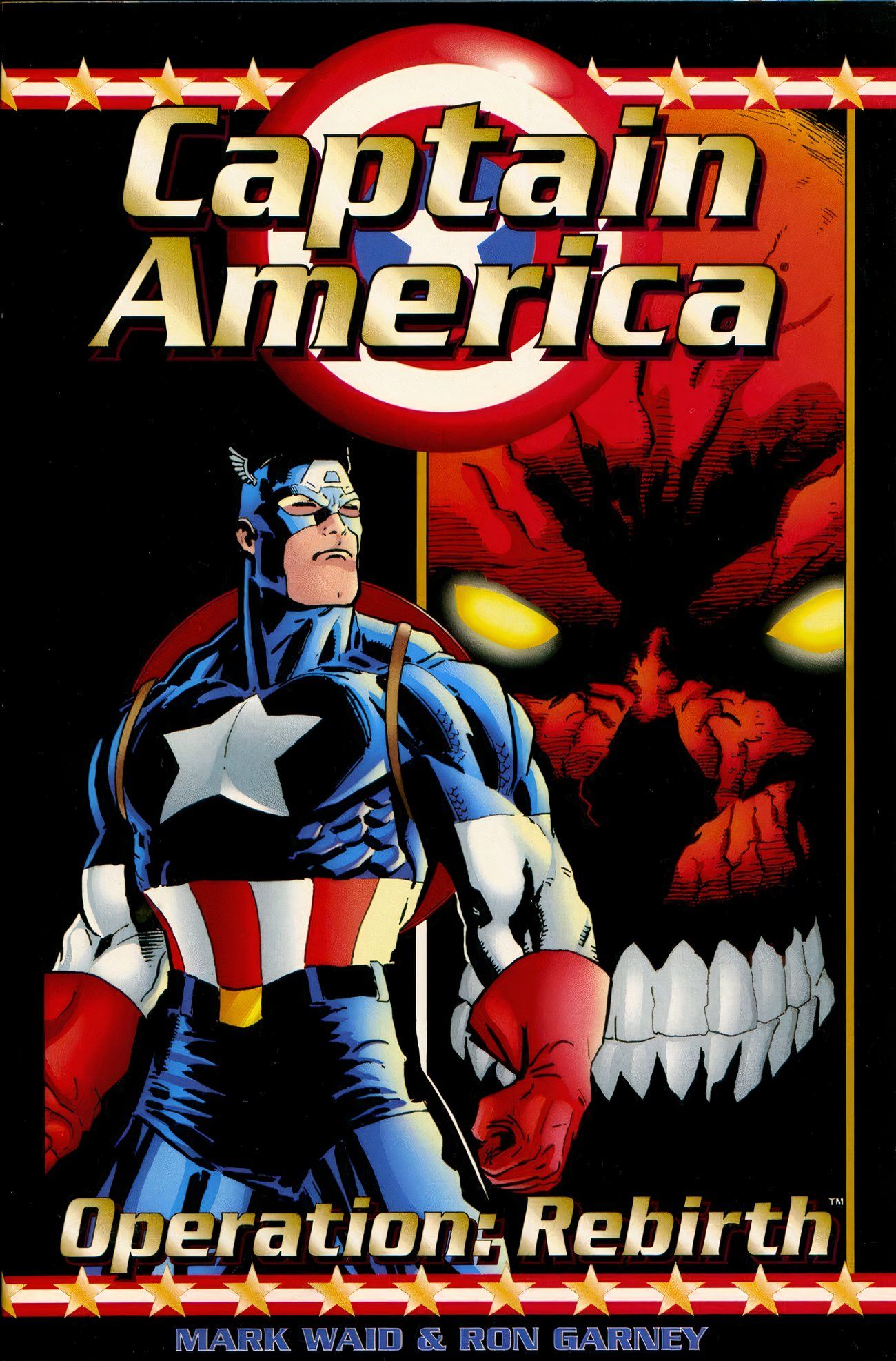
Hell freezes over with this storyline, as Captain America and the Red Skull are forced to team up and work together to save the world. Of course, Red Skull has his own agenda, and it isn’t long before he and Cap come to blows as the Skull tries to turn the situation to his own advantage. Mark Waid and Ron Garney began their run with this storyline, and benefit greatly by clearing the deck of the previous continuity and returning Cap back to his roots.
The story is also notable for bringing back Sharon Carter, who was previously killed off in the seventies. Ever since she was brought back in this storyline, Sharon has remained an important player in Cap’s life ever since, being a featured character in nearly every run on the title thereafter. Waid truly gets what makes Steve Rogers tick, and Ron Garney’ high-energy style keeps the super-heroic action fun and engaging, resulting in one of the absolute best Captain America stories.
4
Truth: Red, White & Black
Truth: Red, White & Black #1-7 by Robert Morales & Kyle Baker
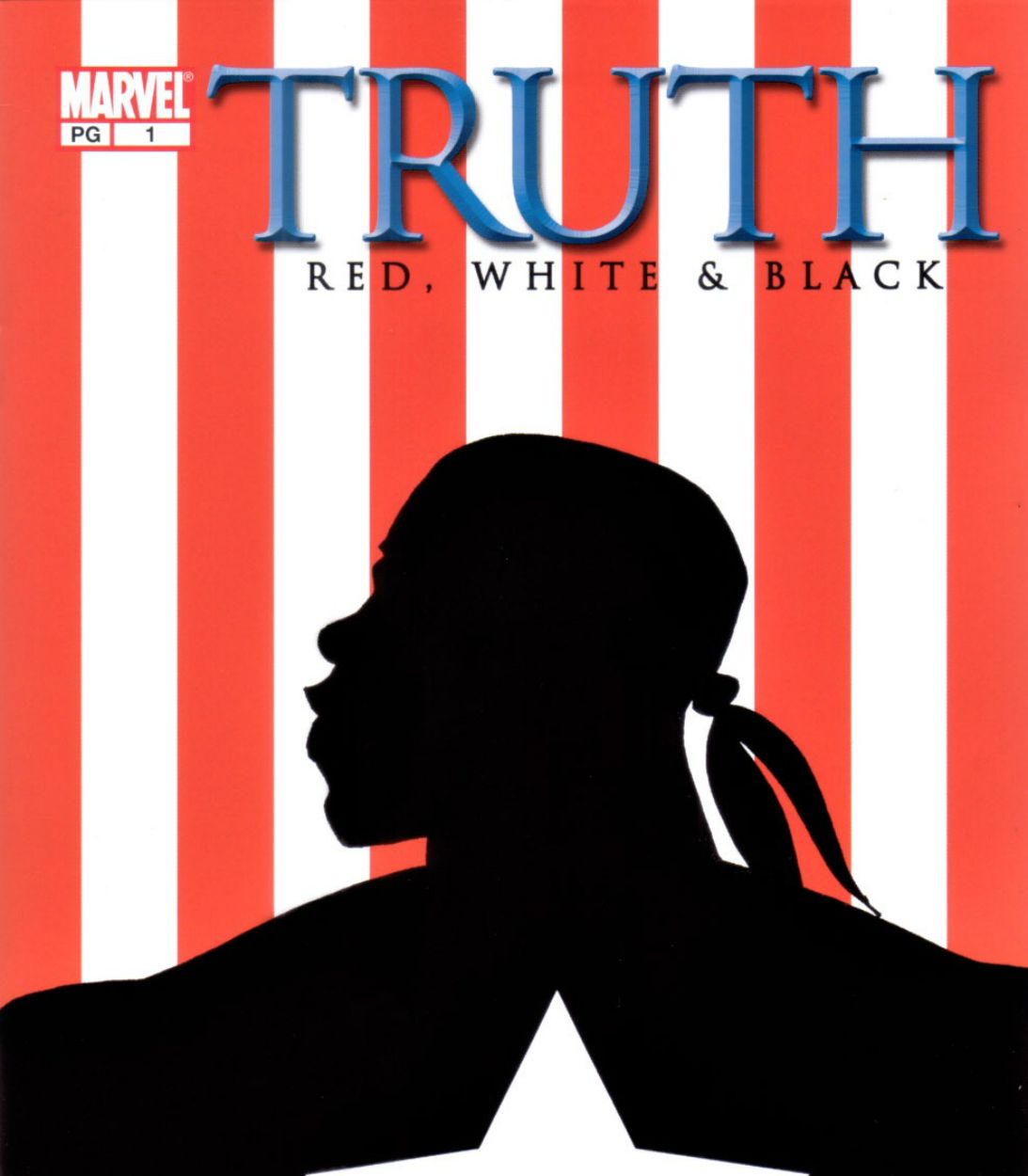
Robert Morales and Kyle Baker take a look at the ugly side of the Marvel Universe with this story, holding up a mirror to the darker aspects of American history by telling the story of the forgotten super-soldier Isaiah Bradley. Inspired by the real-life Tuskegee experiments, Truth chronicles the incredibly-bleak story of the U.S. government attempting to recreate Captain America’s super-soldier serum on a regiment of black soldiers. The only one to survive the experiment is Isaiah Bradley, who ultimately winds up suffering from brain damage in the present-day due to the experiment and the lack of care provided to him.
Isaiah Bradley’s story is brutal at times, but it provides a stark and perhaps even necessary counterpoint to the inspirational aspects of Steve Rogers’ story. The American Dream wasn’t the same for everyone, which Truth explores in emotional and often haunting depths. It’s examination of racism and inequality make for a compelling story, but the true heart of Truth: Red, White & Black lies with the touching portrayal of Isaiah and his wife Faith’s marriage through the years.
3
“The Red Skull Lives”/“He Who Holds the Cosmic Cube!”/”The Red Skull Supreme!”
Tales of Suspense #79-81 by Stan Lee & Jack Kirby
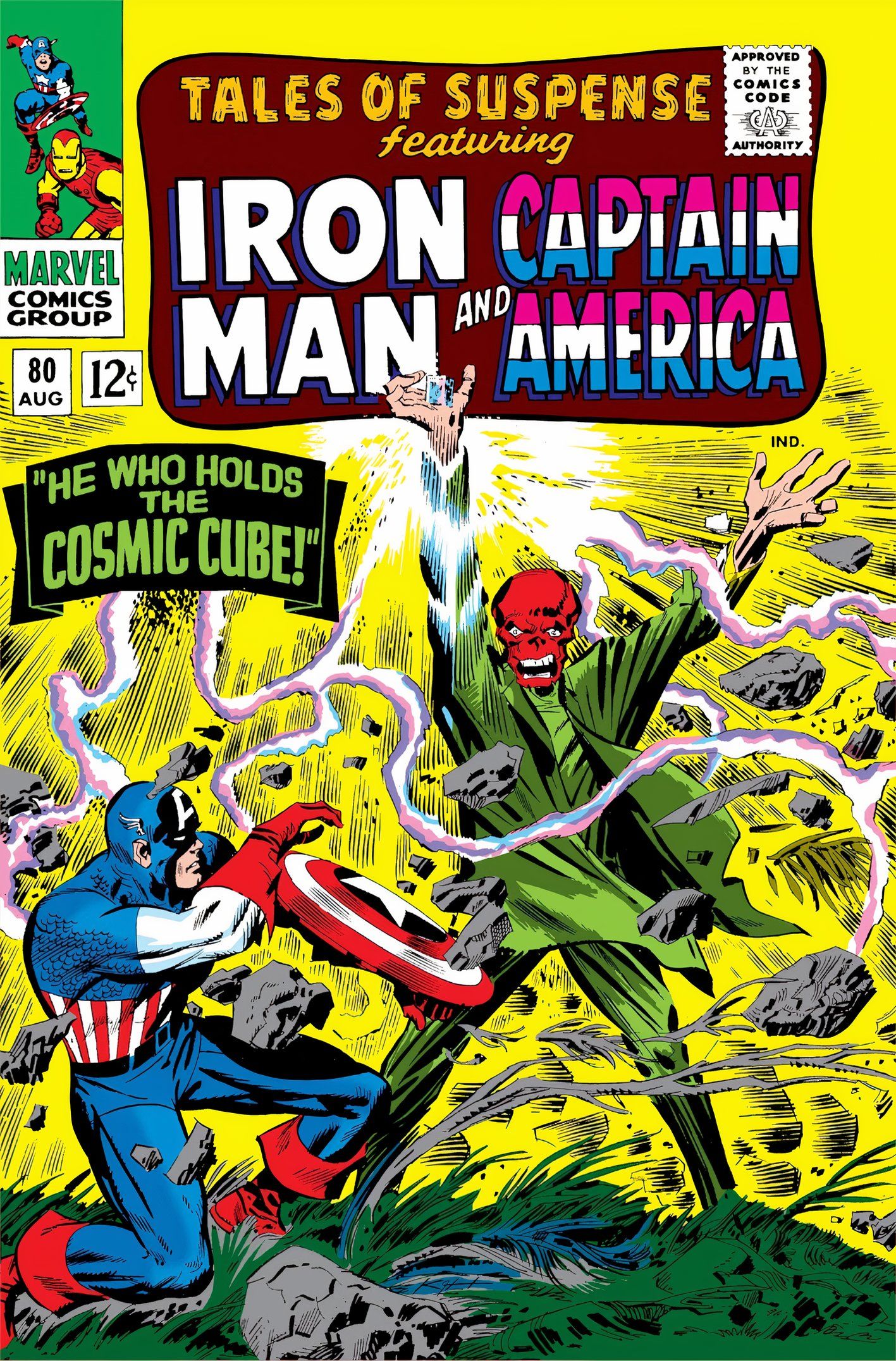
After Captain America was brought out of the ice in Avengers #4, Marvel struggled a bit in finding a direction to take with a character who might have been deemed irrelevant in the turbulent decade that was the 1960’s. That all changed when Stan Lee and Jack Kirby took over his strip in Tales of Suspense, as the legendary pair refashioned the old hero for an entirely new age. No longer merely a propaganda tool in service of a nation at war, Lee and Kirby’s Captain America was refashioned into a sleek espionage strip filled with superhero action and spy-fi intrigue.
Memorable characters such as Sharon Carter, Baron Zemo and MODOK made their debut during this era, but the pinnacle of Lee and Kirby’s Cap stories has to be the trilogy that comprises Tales of Suspense #79-81. Cap’s arch-nemesis the Red Skull returns, given the power to shape reality to his will following his acquisition of the Cosmic Cube. The story consists of one breathless encounter after another, packed with the two-fisted action that made Jack Kirby the greatest superhero artist of his day.
2
“The Strange Death of Captain America”
Captain America (Vol. 1) #110-111, 113 by Jim Steranko
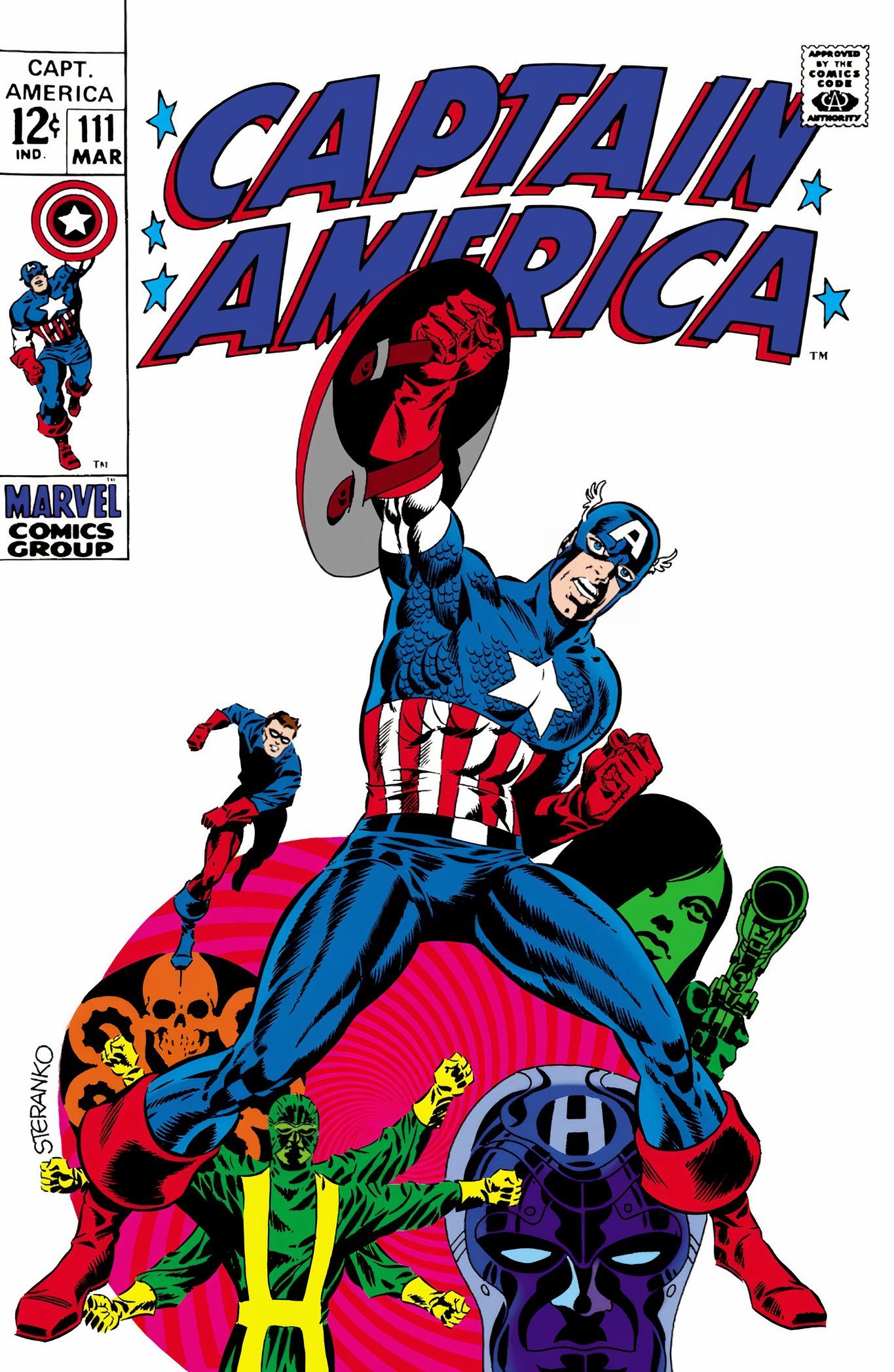
The three issues of Captain America produced by Jim Steranko stand not only as one of the best Cap tales, but one of the absolute best superhero comics of all time. Steranko’s op-art approach continued to revolutionize what could be done with the comic book page following his groundbreaking work on Nick Fury: Agent of S.H.I.E.L.D. The story sees Cap taking on Rick Jones as his new sidekick, only for the star-spangled Avenger to apparently die at the hands of Hydra.
Steranko filled his pages with outlandish layouts, turning the action-packed stylings of Lee and Kirby into a phantasmagoric, four-color display of super-heroics. Nightmarish, Salvador Dali-esque dreamscapes and tense set-pieces inspired by the likes of Hitchcock and Welles show off Steranko’s command of craft, as the writer/artist breaks free of traditional panel layouts with each turn of the page. It may be dated, but the sheer power of Steranko’s imagery remains as potent as ever.
1
“Winter Soldier”
Captain America (Vol. 5) #1-12 by Ed Brubaker, Steve Epting, Michael Lark & John Paul Leon
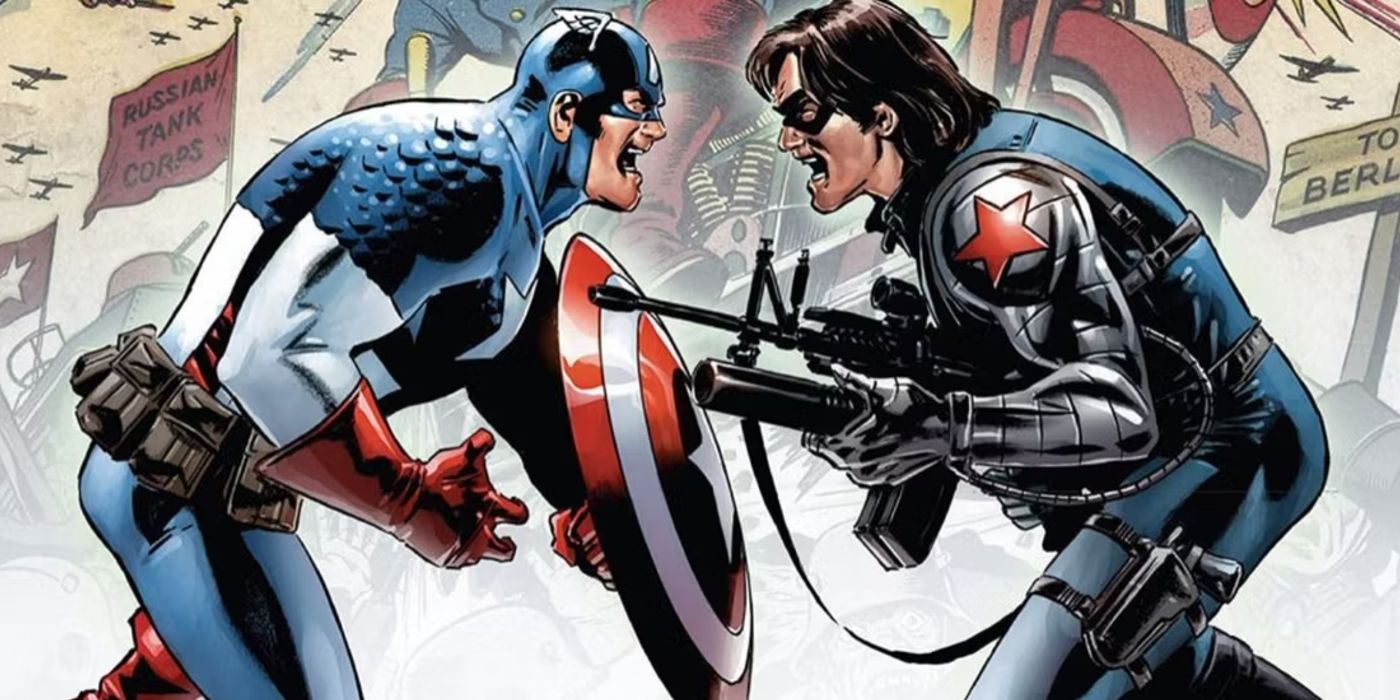
It was one of comics’ great unwritten rules: no matter what, Bucky stays dead. Several creative teams tried to bring back Captain America’s sidekick in some form or another throughout the decades, but James Buchanan Barnes remained untouched. It wasn’t until Ed Brubaker entered the scene in 2004 that Bucky finally returned from the dead in WWII, in a story that would change Cap’s lore forever. “Winter Soldier” revealed that Bucky survived his supposed death WWII, only to be captured by soviet scientists and turned into a brainwashed assassin.
Aside from the Winter Soldier retcon, Brubaker’s first Captain America story succeeds by taking a back-to-basics approach to the title character. The creative team returns Cap to the hi-tech espionage days of the Lee/Kirby run, but updated for a modern audience. Main artist Steve Epting brings a touch of realism to ground the fantasy, resulting in a story more gripping than many best-selling novels and more exciting than a summer blockbuster. At the heart of it all is Steve Rogers’ quest to bring his old friend back from the brink, making this the absolute best Captain America story of all time.
